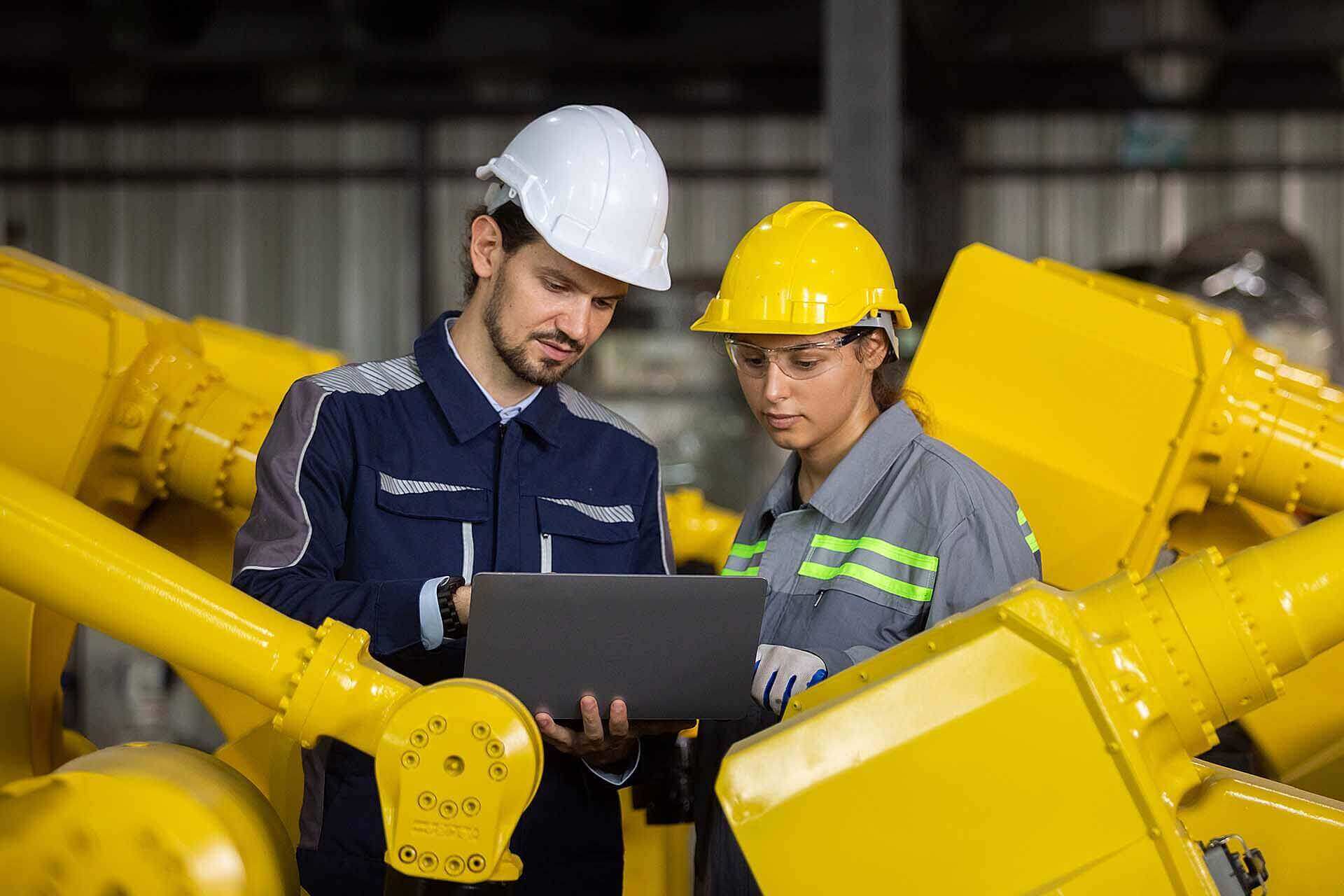3 Tips for Using a Robust CMMS in the Food and Beverage ...
How to configure your CMMS/EAM to optimise your food and beverage ...
Solutions
Resources
Browse our full library of resources all in one place, including webinars, whitepapers, podcast episodes, and more.
Support
Looking for access to technical support, best practices, helpful videos, or training tools? You’ve come to the right place.
About Accruent
Get the latest information on Accruent, our solutions, events, and the company at large.
Automate work orders, lower costs, improve inventory accuracy, and maintain industry-specific regulatory compliance with our CMMS systems.

Whether you're dealing with manufacturing precision, healthcare reliability, or the dynamic environments of retail and education, our CMMS systems adapt to your unique operational needs.
Dramatically boost asset reliability by enabling predictive maintenance and minimising unexpected breakdowns. Extend the lifespan of key assets and ensure consistent production with reduced downtime.
Automate work order scheduling and align maintenance tasks with production cycles for optimal efficiency. Use this automation to enhance workflow coordination and significantly reduce the likelihood of machine downtime due to maintenance oversights or scheduling conflicts.
Ensure effortless adherence to The Joint Commission's EOC and PM standards with comprehensive tools for seamless data documentation, reporting, and retrieval through the entire asset management process.
Elevate financial performance by maximising asset availability, offering precise data for strategic equipment capital planning, and enhancing operations with intelligent automation.
Enhance strategic space utilisation, automate assignments, identify bottlenecks, monitor occupancy, and accelerate reporting for facilities managers.
Boost employee efficiency with FAMIS 360's mobile app. Automate work orders and perform inspections and maintenance on the go for optimal on-site task management and operational readiness.
“The best part of Maintenance Connection - there's honestly a lot, so it's hard to pinpoint that one thing. For me, being a maintenance mechanic prior to moving up in this role, I've always appreciated the fact that you can access documents and drawings in the system at your fingertips with a tablet via MC Express on the shop floor in real-time.”
— Asset Maintenance Manager
Leverage advanced CMMS functionalities to improve accountability, increase productivity, bridge communication gaps, and drive your business towards operational excellence
Use tailor-made reports and dashboards to pinpoint preventive tasks, manage KPIs, optimise performance, and track predictive activities with precision.
Enable a preventive approach to cybersecurity with user-based permissions, standard operating procedures, automated alerts, and more
Streamline service requests, control access, manage resources efficiently, and enhancing tenant engagement while reducing costs and saving time
Facilitate ongoing compliance with ever-changing regulations using functionalities like automated audit logs, searchable work records, intuitive document organisation, and more.
Access key procedures and documentation anywhere, at any time to read meters, update work orders, use barcodes and QR codes, capture electronic signatures, or locate inventory.
Use our native EDMS and IoT integrations, along with our RESTful API, to connect to the right tools and reach a more predictive state.
Find the right Accruent CMMS for your unique industry and pain points.
Streamline workflows, maintain regulatory compliance, reduce operational costs, and automate critical M&R processes in process and discrete manufacturing.
Enable a preventive approach to cybersecurity with user-based permissions, standard operating procedures, automated alerts, and more.
Increase productivity, maximise agility, and optimise facilities and assets with FAMIS 360, our purpose-built CMMS for the public sector, CRE, and education institutions.
Find out if our CMMS solutions are the right fit for your business with a live, one-on-one demo with an Accruent expert

Please wait. The calculator will load momentarily...
Please wait. The calculator will load momentarily...
Accruent software allows you to fully optimise the lifecycle of your asset and facilities, offering connected workflows, integrated experiences and data-backed insights.
CMMS software aligns all team members by allowing them to easily assign, schedule, and process work orders into the system with ease.
Streamline the entire work order lifecycle from initiation to completion, improving efficiency and reducing downtime. Real time tracking and updates allows managers and supervisors the ability to monitor the status of work orders and track technician progress.
Pipelines can be set up in advance, allowing new customers to get added at the start of the workflow and be easily tracked throughout the purchase process.
Tasks are streamlined by providing a central repository of documents and information where users can easily refer.
See asset details for every customer, analyze work orders, and reference historical data when needed. Do not waste time trying to locate customer data when it is not easily accessible.
Mobile accessibility is another key bonus, giving disparate teams the ability to access information on the go.
No, SAP systems and CMMS software are not the same thing. SAP is an enterprise resource planning (ERP) software that is tasked with organization-wide duties like supply chain management, financial calculations, and customer relationship management.
CMMS software is associated with improving maintenance management, from preventative maintenance scheduling to inventory management and more.
Organizations who already rely on an SAP system might seek a CMMS to complement their existing workflows.
Both solutions are valuable for streamlining the maintenance process, but they differ slightly in terms of scope and use case.
Enterprise Asset Management (EAM) software focuses on the entire lifecycle management of physical assets, from the acquisition phase through disposal. EAMs may include asset tracking, depreciation management, capital planning, and compliance management.
CMMS software deals more specifically with day-to-day maintenance management, supporting equipment uptime and improving equipment operations.
The ability to centralize maintenance management into one place, allowing team members to access data from separate locations at a moment’s notice.
By organizing key data into a central software solution, companies can ensure more productivity and less downtime. Preventative tasks like equipment audits can be scheduled quickly and easily.
This is especially lucrative for high-pressure industries like healthcare, where equipment health cannot be compromised.
CMMS Software for Optimized Maintenance
Accruent software allows you to fully optimise the lifecycle of your assets and facilities, offering connected workflows, integrated experiences and data-backed insights.
Subscribe to stay up to date with our latest news, resources and best practices